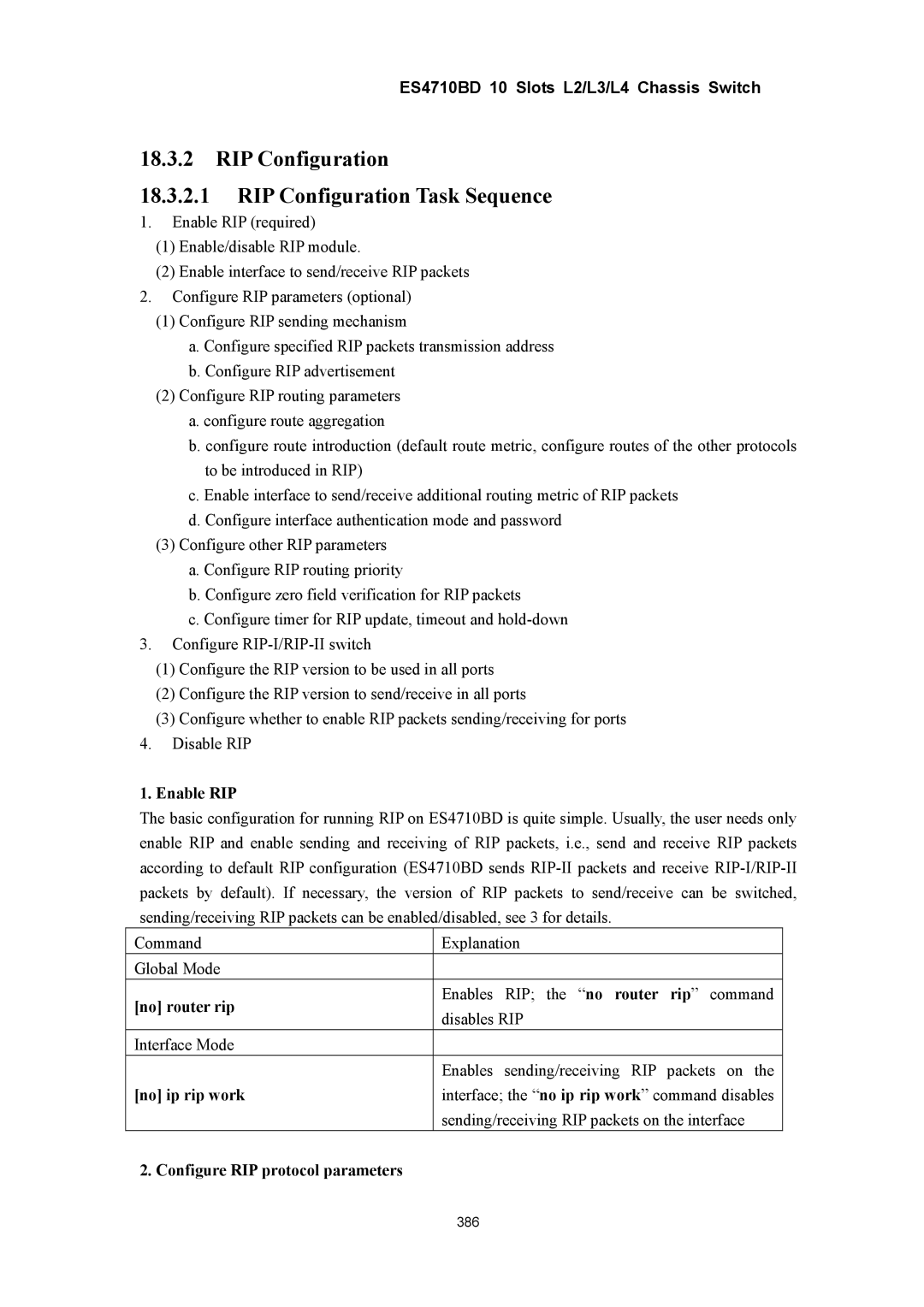
ES4710BD 10 Slots L2/L3/L4 Chassis Switch
18.3.2RIP Configuration
18.3.2.1RIP Configuration Task Sequence
1.Enable RIP (required)
(1)Enable/disable RIP module.
(2)Enable interface to send/receive RIP packets
2.Configure RIP parameters (optional)
(1)Configure RIP sending mechanism
a.Configure specified RIP packets transmission address
b.Configure RIP advertisement
(2)Configure RIP routing parameters
a.configure route aggregation
b.configure route introduction (default route metric, configure routes of the other protocols to be introduced in RIP)
c.Enable interface to send/receive additional routing metric of RIP packets
d.Configure interface authentication mode and password
(3)Configure other RIP parameters
a.Configure RIP routing priority
b.Configure zero field verification for RIP packets
c.Configure timer for RIP update, timeout and
3.Configure
(1)Configure the RIP version to be used in all ports
(2)Configure the RIP version to send/receive in all ports
(3)Configure whether to enable RIP packets sending/receiving for ports
4.Disable RIP
1. Enable RIP
The basic configuration for running RIP on ES4710BD is quite simple. Usually, the user needs only enable RIP and enable sending and receiving of RIP packets, i.e., send and receive RIP packets according to default RIP configuration (ES4710BD sends
CommandExplanation
Global Mode
[no] router rip | Enables RIP; the “no router rip” command | |
disables RIP | ||
| ||
Interface Mode |
| |
| Enables sending/receiving RIP packets on the | |
[no] ip rip work | interface; the “no ip rip work” command disables | |
| sending/receiving RIP packets on the interface | |
2. Configure RIP protocol parameters |
| |
| 386 |
